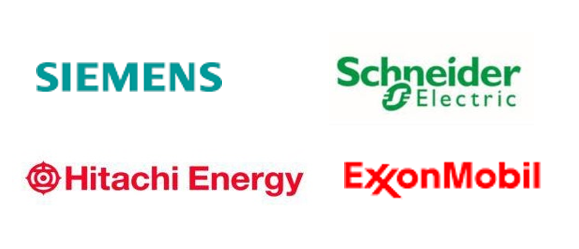Market Overview:
"The global renewable naphtha market was valued at US$ 563.6 Million in 2024 and is expected to register a CAGR of 10.1% over the forecast period and reach US$ 1,339.9 Million in 2033."
|
Report Attributes |
Details |
|
Base Year |
2024 |
|
Forecast Years |
2025-2033 |
|
Historical Years |
2021-2023 |
|
Renewable Naphtha Market Growth Rate (2025-2033) |
10.1% |
Renewable naphtha, a key product of sustainable biomass and waste feedstocks, serves as a green alternative to conventional fossil-based naphtha. It is a vital precursor for producing chemicals, plastics, and transportation fuels. With its low carbon footprint and reduced environmental impact, renewable naphtha is being used in essential application in industries aiming to decarbonize. Rising environmental awareness, stringent regulations, and increasing demand for sustainable solutions is driving its preference and market revenue growth. Also, increasing adoption, advancements in bio-refining technologies, and government initiatives promoting renewable energy sources are factors driving revenue growth of the global renewable naphtha market.
The global renewable naphtha market is registering steady revenue growth as industries are shifting preferences towards eco-friendly alternatives. In addition, continuous technological advancements in biofuels and green chemistry, is resulting in development of advanced renewable naphtha that plays a pivotal role in reducing Greenhouse Gas (GHG) emissions. It is used in various sectors including petrochemicals, and transportation. As industries are focusing on sustainability goals, demand for renewable naphtha is expected to rise steadily. Collaborative efforts between governments and industries to promote renewable energy adoption further contribute to market revenue growth.
Renewable Naphtha Market Trends and Drivers:
Sustainability Imperative: Growing environmental concerns and the need to reduce carbon emissions are creating demand for renewable naphtha, contributing to greener future and in turn, driving market revenue growth.
Regulatory Support: Stringent regulations and policies promoting the use of renewable and sustainable feedstocks are driving demand for renewable naphtha and revenue growth of the global market.
Transition to Circular Economy: Rapid shift towards circular economy models by industries globally is encouraging use of renewable feedstocks, which is driving demand for renewable naphtha and market revenue growth.
Wide-Range of Applications: Versatility of renewable naphtha is resulting in increasing number of applications in various industries including chemicals, transportation, and energy, which is creating high demand and utilization of the product.
Investment in Research and Development (R&D): Increasing investments in research and development of bio-refining technologies is enhancing production efficiency of renewable naphtha.
Renewable Naphtha Market Restraints:
Cost Challenges: Production of renewable naphtha can be more expensive compared to conventional fossil-based alternatives, negatively impacting product adoption and market revenue growth.
Feedstock Availability: Reliance on sustainable biomass sources might face limitations in supply, affecting consistency of renewable naphtha production.
Scaling Issues: As the demand rises, scaling up renewable naphtha production while maintaining quality and efficiency can be a challenge.
Technological Maturity: Some bio-refining technologies are still in the early stages of development, leading to uncertainties and potential setbacks, thereby hampering market revenue growth.
Market Acceptance: Transitioning industries and consumers to embrace renewable naphtha products may require awareness efforts. Currently, low awareness regarding benefits of renewable naphtha could restrain market revenue growth.
Renewable Naphtha Market Opportunities:
Biochemical Industry Collaboration: Companies in the global renewable naphtha market can collaborate with companies in the biochemical industry to develop bio-based chemicals and materials, creating a new revenue stream for global players.
Strategic Partnerships: Forming alliances with technology providers, feedstock suppliers, and end users can unlock opportunities for players operating in the market for seamless integration into supply chains.
Sustainable Aviation Fuel: Renewable naphtha can be a potential feedstock for sustainable aviation fuel, and tapping into this sector and cater to the ongoing demand for cleaner aviation solutions can create revenue opportunities for players in the global market.
Expanding Energy Sector: Renewable naphtha can contribute to the growth of renewable energy sources, such as biofuels and biogas, expanding its application scope.
Government Incentives: Favorable policies and subsidies promoting renewable energy adoption provide opportunities for revenue growth of the global renewable naphtha market.
Consumer Demand: Increasing awareness and preference for eco-friendly products is creating opportunities for companies offering renewable naphtha-based solutions.
Research and Development (R&D): Ongoing R&D efforts can lead to innovations in production technologies, efficiency improvement, and cost reduction, driving market revenue growth.
Green Chemicals: As industries prioritize sustainability, demand for bio-based chemicals could create new revenue avenues for global players and drive market revenue growth.
Circular Economy Models: Companies adopting circular economy models or recycling of products can find value in utilizing renewable naphtha as a sustainable feedstock.
Market Expansion: As sustainability gains prominence, the global renewable naphtha market is expected to expand into new geographical regions, generating revenue opportunities for companies involved in the business.
Renewable Naphtha Market Segmentation:
By Feedstock:
- Vegetable Oils
- Animal Fats
- Algal Biomass
- Other Biomass
By Technology:
- Hydrotreating
- Deoxygenation
- Hydrogenation
By Application:
- Chemicals & Polymers
- Fuels
- Others
By End-Use Industry:
- Petrochemicals
- Transportation
- Others
Renewable Naphtha Market, By Region:
North America:
- United States
- Canada
Asia Pacific:
- China
- India
- Japan
- South Korea
- Australia & New Zealand
- Association of Southeast Asian Nations (ASEAN)
- Rest of Asia Pacific
Europe:
- Germany
- The U.K.
- France
- Spain
- Italy
- Russia
- Poland
- BENELUX (Belgium, the Netherlands, Luxembourg)
- NORDIC (Norway, Sweden, Finland, Denmark)
- Rest of Europe
Latin America:
- Brazil
- Mexico
- Argentina
- Rest of Latin America
The Middle East & Africa:
- Saudi Arabia
- United Arab Emirates
- South Africa
- Egypt
- Israel
- Rest of MEA (Middle East & Africa)
The US leads in North America renewable naphtha market due to robust government support for renewable energy initiatives, technological advancements, and growing environmental consciousness. In addition, Presence of well-developed infrastructure and substantial investments in sustainable solutions in the country is driving adoption of renewable naphtha.
In Europe, rapid shift towards carbon neutrality and green energy sources is driving adoption of renewable naphtha. In addition, stringent regulations, ambitious renewable energy targets, and emphasis on circular economy principles are key trends driving adoption and sales of renewable naphtha as sustainable alternative.
Rapid industrialization in China and India and focus of these countries on cleaner energy sources position these as key investors in renewable naphtha in the Asia Pacific market. In addition, government policies, advancements in renewable technologies, and the need to address pollution concerns are driving adoption of renewable naphtha, and support revenue growth of the market in this region.
Brazil and Mexico are expected to be at the forefront of growth for renewable naphtha manufacturers in Latin America. Favorable regulatory frameworks, rising renewable energy investments, and efforts to use new and sustainable energy sources support revenue contribution of these countries in Latin America and drive revenue growth of the market in this region.
Leading Companies in Renewable Naphtha Market & Competitive Landscape:
The global competitive landscape of the global renewable naphtha market is characterized by presence of various key players striving for market dominance. Major international companies are actively engaged in research and development, collaborations, strategic partnerships, and capacity expansions to increase market share. Companies are also focusing on innovation in technology, sustainable feedstock sourcing, and efficient production processes. These companies are focusing on delivering high-quality renewable naphtha to cater to the increasing demand from industries aiming to reduce their carbon footprint. Intense competition is driving continuous advancements, ensuring a dynamic and continuously evolving market landscape.
Company List:
- Neste Corporation
- TotalEnergies
- Repsol S.A.
- Eni S.p.A.
- Honeywell UOP
- Chevron Corporation
- Axens
- INEOS Group AG
- Preem AB
- OMV Aktiengesellschaft
- Enerkem Inc.
- REG Life Sciences LLC
- Clariant AG
- Dow Inc.
- LyondellBasell Industries N.V.
Research Scope
|
Report Metric |
Report Details |
|
Renewable Naphtha Market size available for the years |
2021-2033 |
|
Base Year |
2024 |
|
Forecast Period |
2025-2033 |
|
Compound Annual Growth Rate (CAGR) |
10.1% |
|
Segment covered |
By Feedstock, Technology, Application, End-Use Industry, and Region |
|
Regions Covered |
North America: The U.S. & Canada Europe: Germany, The U.K., France, Spain, Italy, Russia, Poland, BENELUX, NORDIC, & Rest of Europe Asia Pacific: China, India, Japan, Australia & New Zealand, ASEAN, & Rest of Asia Pacific Latin America: Brazil, Mexico, Argentina, & Rest of Latin America The Middle East & Africa: Saudi Arabia, United Arab Emirates, South Africa, Egypt, Israel, and Rest of MEA |
|
Fastest Growing Country in Europe |
Germany |
|
Largest Market |
North America |
|
Key Players |
Neste Corporation, TotalEnergies, Repsol S.A., Eni S.p.A., Honeywell UOP, Chevron Corporation, Axens, INEOS Group AG, Preem AB, OMV Aktiengesellschaft, Enerkem Inc., REG Life Sciences LLC, Clariant AG, Dow Inc., LyondellBasell Industries N.V., and among others |
Frequently Asked Question
What is the size of the global renewable naphtha market in 2024?
The global renewable naphtha market size reached US$ 563.6 Million in 2024.
At what CAGR will the global renewable naphtha market expand?
The global renewable naphtha market is expected to register a 10.1% CAGR through 2025-2033.
How big can the global renewable naphtha market be by 2033?
The market is estimated to reach US$ 1,339.9 Million by 2033.
What are the emerging trends observed in the global renewable naphtha market?
Emerging trends include advancements in conversion technologies, innovative feedstock sources, increasing collaboration between industry players, and integration of renewable naphtha in various applications.
How are government initiatives supporting revenue growth of the global renewable naphtha market?
Governments of various countries across the globe are offering incentives, subsidies, and tax benefits for renewable energy projects, investing in research and development, and implementing policies to encourage the use of renewable naphtha in various industries.

